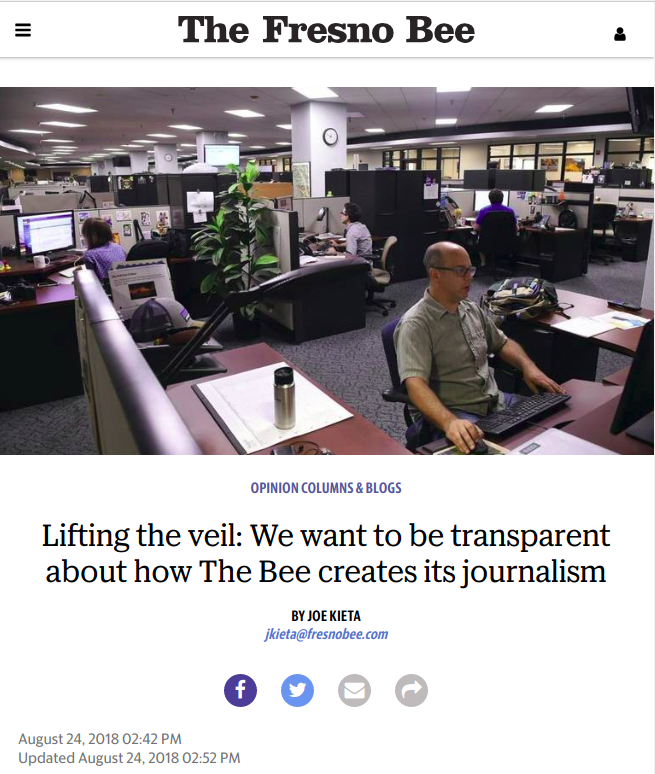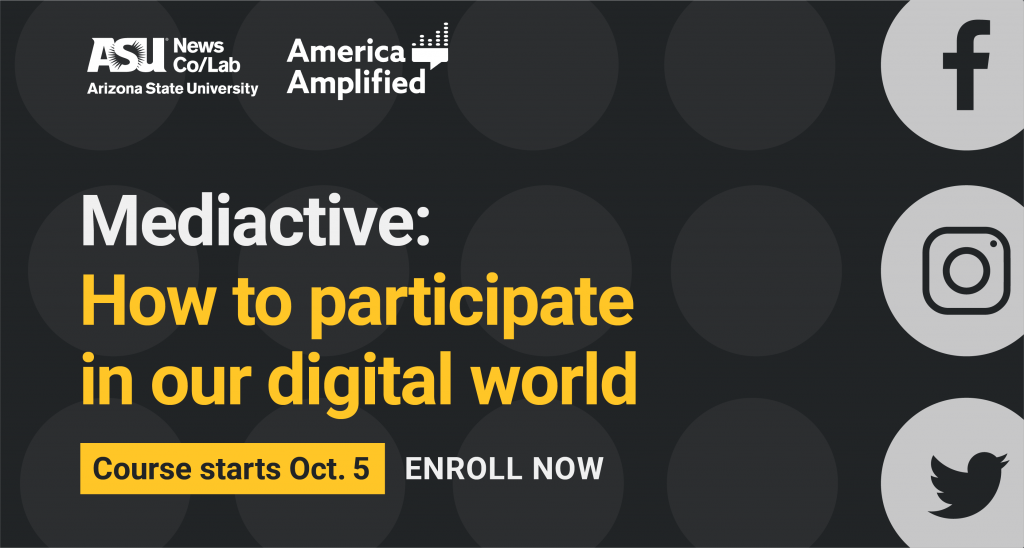Why journalism should be a community leader in media literacy
Four years ago, in the wake of the misinformation-polluted 2016 elections, a “news literacy working group” convened at Arizona State University. The gathering, sponsored by Facebook and the Walter Cronkite School of Journalism and Mass Communication, led to a host of new initiatives, and boosts for existing ones, aimed at upgrading the demand side of information’s supply-demand ecosystem. One of the new projects was ours: The ASU News Co/Lab. We work to design scalable solutions to upgrade demand for credible information, and to encourage active participation in the information ecosystem, via media literacy. We’re collaborating with the three major institutions in our society that can bring scale to this immense task: education, media, and technology. This post is part of a series.
Dear journalists:
We need you.
We need you to become leaders in bringing something to the communities you serve that you have never made a part of your mission: media literacy.
We’re talking about a key element in the so-called marketplace of ideas. Markets are about supply and demand. You already create lots of supply. Thank you for that; we need quality journalism more than ever.
Now we’d like to encourage you to improve the demand — that is, help us upgrade ourselves, to be much better at consuming information and participating in the media (and civic) ecosystem. And here, “us” means everyone.
Why? Because while providing credible, newsworthy information to your communities is essential, you have an even broader responsibility to the people you serve. You need to better understand where and how they get and process information. That will help you explain your own news process in a way that helps people sort out what’s real versus what’s fake — and cut through the noise to find what’s relevant, actionable and useful in their own lives. You can encourage them to participate in the conversations every community needs to have with itself.
You can do that, and more, by becoming a champion for media literacy, which is broadly defined as the ways people use media to navigate, understand and make decisions about the world around them. And you can make a giant start on this with some tweaks to your everyday journalism.
What you can do — today

Through our collaboration, the Fresno Bee incorporated more transparent practices.
How? First, you should embed two vital elements of 21st-century journalism into your work. They are transparency and engagement. Then, we hope, you will take a leadership role in promoting the idea, and practice, of media literacy throughout your community.
The News Co/Lab has collaborated with and learned from many others in our field, including The Trust Project, Trusting News at the American Press Institute and many others. We’ve also worked closely with journalism organizations on this process, including McClatchy’s Kansas City Star and Science News.
We bundled what we’ve learned into a toolkit that any news organization can use — and hope you’ll take a look at it. Here’s how the process works.
Journalistic transparency starts with telling your community who you are, what you do, how you do it, and why you do it. You should help your community understand, among other things, how news works, from the different types of content you publish and how you label it, to the different roles within your newsroom. You should also help people know how it sometimes doesn’t work, by letting them know about, and forthrightly fixing, your mistakes.
When we say “engagement” we’re talking about two major practices. The first is to have deep and meaningful conversations with the community you serve, remembering that the first rule of conversation is to listen. The second practice is collaboration, which is an extension of conversation: asking for help in doing better journalism, whether from other media outlets or community organizations.
One of our favorite examples of community engagement that boosts media literacy is called “What’s Your KCQ,” in which The Kansas City Star and Kansas City (Missouri) Public Library partnered to offer readers answers to questions about history and current events in the metropolitan area. They worked with Hearken, a company that helps create what it calls “public-powered journalism,” and the result has been a long-running series featuring not only answers to questions but explanations of the reporting and research that led to the answers.
By offering an inside look at your process and focusing resources on information that directly serves your community’s information needs, you help audiences become active participants — a key component of media literacy. This can only be to your benefit, if you do your jobs well, because those practices are part of how you earn trust in an era when trust is so frayed.
Making media literacy your mission
We said at the beginning that we believe news organizations can be community leaders in media literacy. That means going beyond embedding transparency and journalistic engagement to doing things that look as much like community organizing as creating media.
You can partner with libraries (as above), schools, service organizations and others to make media literacy a priority in your communities. You can ask major businesses to support the teaching of these skills. You can even collaborate with other media organizations on projects that provide useful, actionable information to your community.
Here’s another example. In October, we partnered with America Amplified for a special live session of Medicative, our free online media literacy course. The public media initiative focused on community engagement reporting around the 2020 election; building trust in trustworthy media sources was a key component. Through a series of live sessions with America Amplified journalists, Mediactive participants went behind the scenes in the stations’ election and coronavirus coverage — giving them access to reporters in their communities they otherwise wouldn’t have.
Journalism has several core missions. The most important is to serve communities with essential information, and to do so with integrity.
Another is to do it sustainably, with ongoing support from the community. You need allies — people who understand and see the value of the information you provide — and you need to demonstrate, day in and day out, why you’ve earned their support.
We believe community media literacy should be another part of your mission. You can help nurture a community that wants trustworthy information and is clear on why that matters. That kind of community will be a more resilient place in which to live and do business — and it will be more supportive of what you do. We’re eager to help.
This post is part of a series. The News Co/Lab’s mission is to upgrade all of us on information’s “demand side,” via media literacy, and to do it at scale. We’re working with the three major institutions in our society that can bring scale to this immense task: education, media and technology.
Dan Gillmor is a longtime participant in new media and digital media literacy. He’s author of the 2009 book, Mediactive, discussing media literacy in the digital age from a journalist’s perspective.

